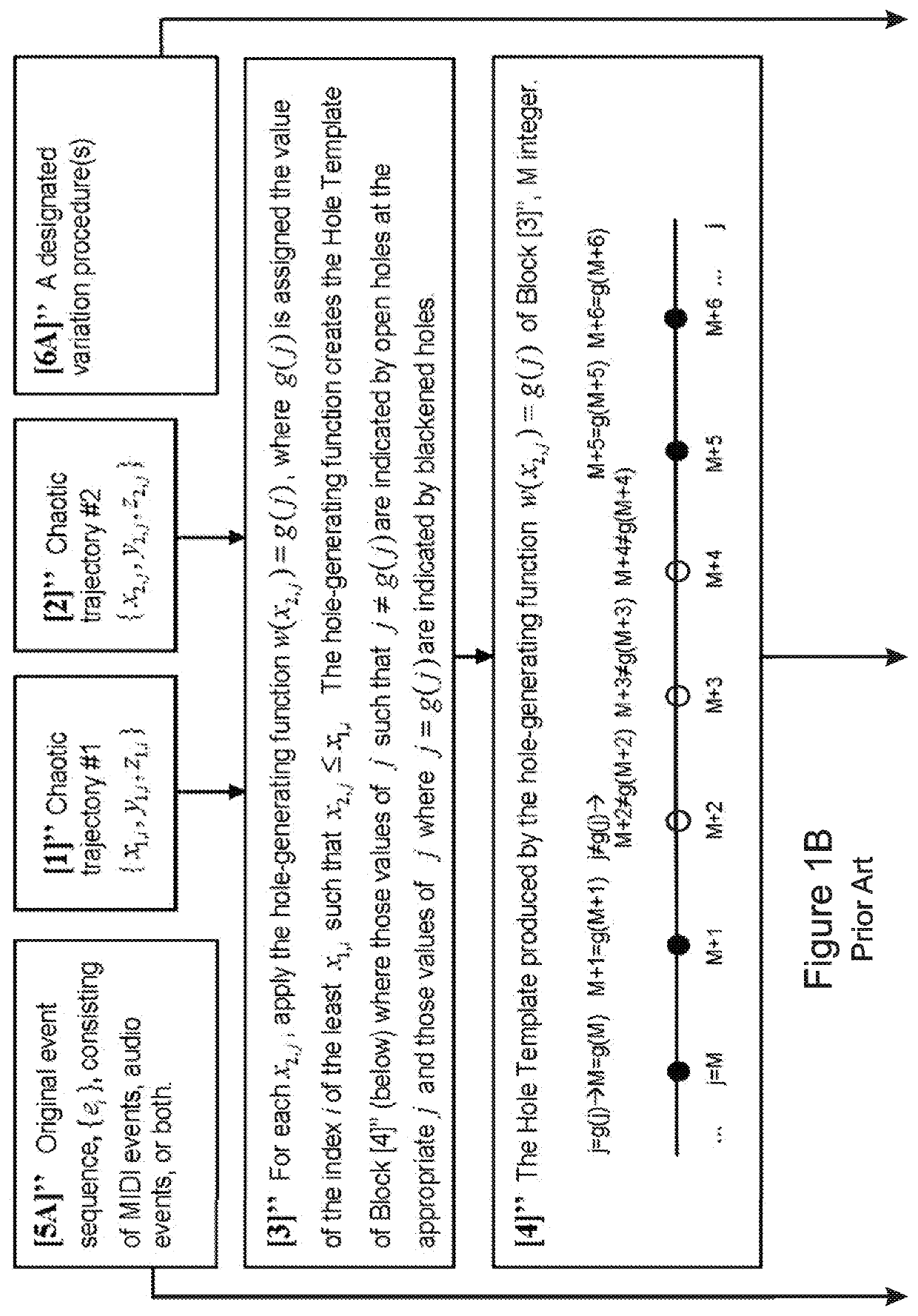Method of creating musical compositions and other symbolic sequences by artificial intelligence
a musical composition and symbolic sequence technology, applied in the field of musical compositions and other novel sequences of symbols, can solve the problems of general disagreement between human experts such as musicologists and theorists, perceived lack of original artistic style, and general disagreement about any general approach
- Summary
- Abstract
- Description
- Claims
- Application Information
AI Technical Summary
Benefits of technology
Problems solved by technology
Method used
Image
Examples
Embodiment Construction
[0128]The present invention is a method of using artificial intelligence to create new works of music and other symbolic sequences that reflect and augment the individual compositional style of the user, and / or introduce novel musical styles. Specifically, the present invention creates a large quantity of training data, as may be required by a deep learning AI, where the training data is derived mainly or entirely from only one, or only a few, “seed” compositions, which can be works composed by the user and / or works selected by the user that reflect a distinctive compositional style or creative signature that the user wishes to impart to the AI-composed works.
[0129]With reference to FIG. 2A, the present method begins with the user providing one or more “seed” compositions 208, which can include music composed by the user and / or music composed by others and selected by the user. The large body of input data that is required for training an AI is then derived by applying variation and...
PUM
 Login to View More
Login to View More Abstract
Description
Claims
Application Information
 Login to View More
Login to View More - Generate Ideas
- Intellectual Property
- Life Sciences
- Materials
- Tech Scout
- Unparalleled Data Quality
- Higher Quality Content
- 60% Fewer Hallucinations
Browse by: Latest US Patents, China's latest patents, Technical Efficacy Thesaurus, Application Domain, Technology Topic, Popular Technical Reports.
© 2025 PatSnap. All rights reserved.Legal|Privacy policy|Modern Slavery Act Transparency Statement|Sitemap|About US| Contact US: help@patsnap.com



